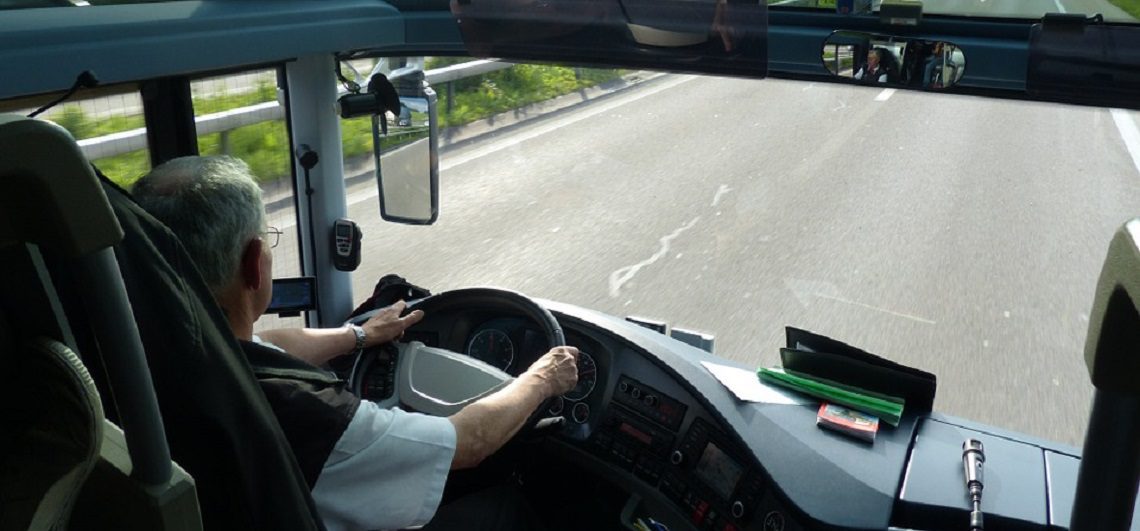by David Barrett, Chief Commercial Officer of global assessment specialist cut-e.
Commercial drivers – whether they drive a train, lorry, bus, ferry, delivery van or forklift truck – have a responsibility for the safety of their passengers or cargo and their vehicles. If you recruit drivers, you’ll undoubtedly check whether job candidates have the necessary driving skills and any required licences or certificates. You may even conduct medical and eyesight checks. But can you be confident that those individuals will drive safely?
If one of your drivers suffers from inattentiveness, fatigue or stress, or if they’re under the influence of alcohol or drugs, they can cause serious or fatal injuries. Across Europe, for example, the biggest cause of death at work is being struck by a moving vehicle.
The best ‘risk management’ strategy is to prevent accidents from occurring in the first place, rather than trying to deal with the consequences. It’s now possible to do this when recruiting drivers, as new psychometric assessments can predict whether or not an individual has the propensity to cause accidents. These assessments measure an individual’s competencies and disposition, and they’ll predict whether that person will be a safe driver who is able to deal effectively with the challenges they’ll face.
Key attributes
Our research shows that good commercial drivers, regardless of what vehicle they drive, share important attributes. For example, they’re observant, they pay attention and they’re able to concentrate; they can multitask and they have quick reactions, spatial orientation and a good memory. As a result, they’ll be vigilant in their role and they’ll strive to achieve safety rather than taking risks.
The importance of each of these aspects may be weighted differently for different roles. But they can all be assessed. For example, you can measure a candidate’s ability to concentrate; their reaction speed; their sense of direction and orientation; their ability to perform several tasks simultaneously under time pressure and their ability to remember information. Their personality and behavioural tendencies can also be examined to check for aspects such as impulse control, ethical awareness, trustworthiness and the likelihood of whether they’ll behave counterproductively at work. An overall score can then be calculated for each candidate. Those with a low score will have a greater tendency to cause accidents.
Different versions of these tests are available for different industries. For example, they include appropriate signs and symbols for drivers of ferries, trains, buses and other commercial vehicles, to make them feel relevant to candidates in each industry. Many are also optimised for mobile devices, so candidates can complete them when and where it is convenient to do so.
Testing of this nature clearly has a value when recruiting new drivers. For some roles, such as pilots, employers will adopt a sophisticated selection process and candidates will be thoroughly tested to assess their suitability. However, candidates for low-paid driving roles may not have been psychometrically assessed before. Now, they can be – and this has considerable safety implications.
As well as rejecting unsuitable applicants from the hiring process, short three-minute versions of these tests can also be used as ‘pre-shift checks’ to assess whether employees are overtired, stressed or intoxicated when they ‘clock in’. Many companies find that it isn’t possible to ‘safety-check’ all of their drivers prior to every shift, because they employ so many people. However, a short test can be conducted via a laptop on-site and if an employee is ‘flagged’, they can then be assessed one-to-one by a supervisor who can confirm whether or not they’re fit for work. The individual may have ‘failed’ the test because they were rushing; the supervisor would be able to tell if this was the case or whether there was a deeper problem. Checking occasional flagged individuals is a manageable task for supervisors – and it helps companies to ensure that their drivers and machine operators are clear-headed and attentive when they start every shift.
Reducing the annual rate of accidents and injuries in your organisation, even by five percent, will bring significant employee and financial benefits. With today’s assessments, you can now determine within a few minutes whether a person has the disposition and the attributes to drive safely and attentively. Recruiting only these individuals will help you to lower the risk of accidents, save unnecessary costs, protect expensive vehicles and safeguard your reputation.












































